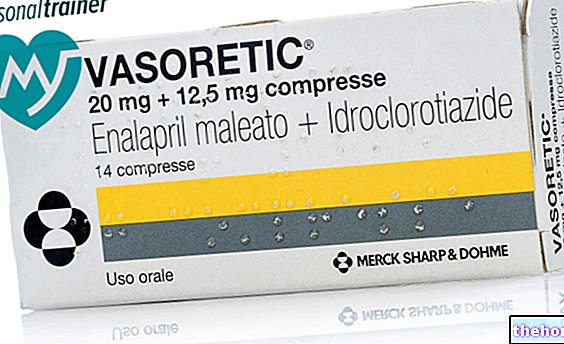Active ingredients: Lidocaine, Prilocaine
Emla 2.5% + 2.5% cream
Why is Emla used? What is it for?
PHARMACOTHERAPEUTIC CATEGORY
Local anesthetics amides in association.
THERAPEUTIC INDICATIONS
EMLA cream is indicated for topical anesthesia:
- of intact skin in conjunction with:
- needle insertions such as intravenous catheters or blood draws,
- superficial surgical interventions;
- of the genital mucosa, for example before superficial surgery or infiltration anesthesia.
Contraindications When Emla should not be used
Hypersensitivity to the active substances or to any of the excipients. Congenital or idiopathic methemoglobinemia.
Precautions for use What you need to know before taking Emla
Patients with insufficient glucose-6-phosphate dehydrogenase (eg favism) or with congenital or idiopathic methemoglobinemia are more sensitive to drugs that induce methemoglobinemia.
As the absorption data are insufficient, EMLA should not be applied to open wounds.
Due to the potentially increased absorption on freshly shaved skin, it is important to adhere to the recommended dosage, area and time of application (see section Dose, method and time of administration).
Clinical trials of heel puncture in infants have not demonstrated the efficacy of EMLA.
Particular attention should be paid to patients with atopic dermatitis to whom EMLA is applied. A shorter application time, approximately 15 - 30 minutes, should be sufficient for this type of patient. In patients with atopic dermatitis, application times longer than 30 minutes may cause an increase in the incidence of local vascular reactions, in particular redness of the application area and in some cases petechia and purpura (see section Undesirable effects).
An application time of 30 minutes is recommended before curettage of molluscs in children with atopic dermatitis. EMLA should not be applied to the genital mucosa of children as absorption data is insufficient.
If EMLA is to be applied close to the eyes, special care must be taken as it can cause corneal irritation.
The loss of the ocular protective reflex can lead to corneal irritation and potential abrasions. In case of contact with the eyes, rinse immediately with water or a sodium chloride solution and protect the part until normal conditions are restored.
Interactions What drugs or foods can change the effect of Emla
Tell your doctor or pharmacist if you have recently taken any other medicines, even those without a prescription.
Prilocaine, in high doses, may cause an increase in blood levels of methemoglobin particularly when it is given in combination with drugs that induce methemoglobinemia (eg, sulphonamides). If high doses of EMLA are applied, it is necessary to assess the risk of additional systemic toxicity in patients already being treated with other local anesthetics or with drugs structurally related to local anesthetics, since the toxic effects are additive.
Specific interaction studies with lidocaine / prilocaine and class III antiarrhythmic drugs (e.g. amiodarone) have not been performed. Caution is advised in these cases (see section "Special warnings") Drugs that reduce the clearance of lidocaine (eg cimetidine or beta blockers) can cause potentially toxic plasma concentrations when lidocaine is applied at repeated high doses over a long period. Interactions of this type are therefore of no clinical relevance following short-term treatments with lidocaine (eg EMLA cream) at recommended doses.
Warnings It is important to know that:
EMLA should not be used in patients with damage to the tympanic membrane. Tests in laboratory animals have shown that EMLA cream has an ototoxic effect when instilled into the middle ear. However, animals with an intact tympanic membrane have not shown any abnormalities after treatment with EMLA cream in the external auditory canal.
A transient and clinically insignificant increase in methemoglobin levels is generally observed up to 12 hours after application of EMLA in infants less than three months of age.
Patients treated with class III antiarrhythmic drugs (eg amiodarone) should be closely monitored including ECG performance, as cardiac effects can be additive.
Until further clinical data are available, do not use EMLA in the following cases:
a) before an "intracutaneous injection of a live BCG type vaccine, as an" interaction between the active substances of EMLA and the vaccine cannot be excluded;
b) in newborns and infants up to 12 months of age undergoing treatment with drugs that induce methemoglobinemia;
c) in premature babies with a gestational age of less than 37 weeks.
EMLA 2.5% + 2.5% cream contains polyoxyethylene hydrogenated castor oil which may cause local skin reactions.
Pregnancy and breastfeeding
Ask your doctor or pharmacist for advice before taking any medicine. Animal studies do not indicate direct or indirect harmful effects with respect to pregnancy, embryo-fetal development, parturition or postnatal development.
Pregnancy
In both animals and humans, lidocaine and prilocaine cross the placental barrier and can be absorbed by fetal tissues. It is reasonable to assume that lidocaine and prilocaine have been used in many pregnant women and women of childbearing age. Up to now, no alterations related to the reproductive process have been evidenced such as, for example, increased incidence of malformations or other harmful effects, direct or indirect, for the fetus. However, caution should be exercised in pregnant women.
Feeding time
Lidocaine and, most likely, prilocaine are excreted in breast milk but in such small amounts that, at the indicated therapeutic doses, there is generally no risk to the baby.
EFFECTS ON THE ABILITY TO DRIVE VEHICLES AND ON THE USE OF MACHINERY
EMLA does not affect the ability to drive and use machines.
Dosage and method of use How to use Emla: Dosage
- After a longer application time, the anesthetic effect decreases.
- The application time of more than one hour has not been documented.
- Until further clinical data are available, EMLA should not be applied to neonates and infants between 0 and 12 months of age undergoing treatment with drugs that induce methaemoglobinaemia.
- No clinically relevant increase in methemoglobin levels was observed after an application time of up to 4 hours on 16 cm2.
1 gram of EMLA cream administered through the 30 g aluminum tube corresponds to a layer of cream about 3.5 cm long.
People who apply or remove the cream often should make sure to avoid contact with it in order to prevent the development of hypersensitivity.
Overdose What to do if you have taken too much Emla
In case of accidental ingestion / intake of an overdose of EMLA, notify your doctor immediately or go to the nearest hospital.
Rare cases of clinically significant methemoglobinemia have been reported.
High doses of prilocaine can cause an increase in methemoglobin levels particularly when given in combination with drugs that induce methemoglobinemia (such as sulfonamides). More severe cases of methemoglobinemia can be treated with methylene blue slowly injected intravenously.
Should other symptoms of systemic toxicity occur, these should be similar to those induced by local anesthetics administered by other routes of administration. The toxicity of local anesthetics manifests itself with symptoms of excitation of the nervous system and, in severe cases, with depression of the central nervous and cardiovascular systems.
Severe neurological symptoms (seizures, CNS depression) should be treated symptomatically with "respiratory assistance and the administration of anticonvulsant drugs; Circulatory signs are treated in line with resuscitation recommendations."
Since the absorption rate on intact skin is slow, a patient showing signs of toxicity should be observed for a few hours after emergency treatment.
If you have any questions about the use of EMLA, ask your doctor or pharmacist.
Side Effects What are the side effects of Emla
Like all medicines, EMLA can cause side effects, although not everybody gets them.
Frequencies are defined as follows: very common (≥ 1/10), common (≥ 1/100,
1) Intact skin
2) Genital mucosa
If you get any side effects, talk to your doctor or pharmacist. This includes any possible side effects not listed in this leaflet. You can also report side effects directly via the Italian Medicines Agency, website: https://www.aifa.gov.it/content/segnalazioni-reazioni-avverse By reporting side effects you can help provide more information on safety of this medicine.
Expiry and Retention
Expiry: see the expiry date printed on the package.
The expiry date refers to the product in intact packaging, correctly stored.
DO NOT USE THIS MEDICINAL PRODUCT AFTER THE EXPIRY DATE WHICH IS STATED ON THE PACKAGE AND ON THE TUBE AFTER EXP. THE EXPIRY DATE REFERS TO THE LAST DAY OF THAT MONTH.
Do not throw any medicines via wastewater or household waste. Ask your pharmacist how to throw away medicines you no longer use. This will help protect the environment.
Store at room temperature. Avoid freezing.
The protective membrane of the tube is removed using the cap.
KEEP THIS MEDICINAL PRODUCT OUT OF THE SIGHT AND REACH OF CHILDREN.
Composition and pharmaceutical form
COMPOSITION
One gram of cream contains:
Active principles:
lidocaine 25 mg; prilocaine 25 mg.
Excipients: polyoxyethylene hydrogenated castor oil, acrylic acid polymer, sodium hydroxide, purified water.
PHARMACEUTICAL FORM AND CONTENT
Cream.
EMLA cream is an "oil in water emulsion in which the oily phase consists of a eutectic mixture in free bases of lidocaine and prilocaine in a 1: 1 ratio.
Box containing 1 tube of 5 g of cream + 2 occlusive plasters.
Box containing 5 tubes of 5 g of cream + 10 occlusive patches.
Box containing 1 tube of 30 g of cream - non-commercial packaging.
Source Package Leaflet: AIFA (Italian Medicines Agency). Content published in January 2016. The information present may not be up-to-date.
To have access to the most up-to-date version, it is advisable to access the AIFA (Italian Medicines Agency) website. Disclaimer and useful information.
01.0 NAME OF THE MEDICINAL PRODUCT
EMLA 2.5% + 2.5% CREAM
02.0 QUALITATIVE AND QUANTITATIVE COMPOSITION
Active principles:
1 g of EMLA cream contains 25 mg of lidocaine and 25 mg of prilocaine.
For the full list of excipients see section 6.1.
03.0 PHARMACEUTICAL FORM
Cream.
EMLA cream is an "oil in water emulsion in which the oily phase consists of a eutectic mixture in free bases of lidocaine and prilocaine in a 1: 1 ratio.
04.0 CLINICAL INFORMATION
04.1 Therapeutic indications
EMLA cream is indicated for topical anesthesia of:
intact skin in conjunction with
- needle insertions such as intravenous catheters or blood sampling,
- superficial surgical interventions;
1. genital mucosa, for example before superficial surgery or infiltration anesthesia;
04.2 Posology and method of administration
1 After a longer application time, the anesthetic effect decreases.
2 The application time of more than one hour has not been documented.
3 Until further clinical data are available, EMLA should not be applied to infants between 0 and 12 months undergoing treatment with drugs that induce methemoglobinemia.
4 After an application time of up to 4 hours on 16 cm2, no clinically relevant increase in methemoglobin levels was observed.
1 gram of EMLA cream administered through the 30 g aluminum tube corresponds to a layer of cream about 3.5 cm long.
People who apply or remove the cream often should make sure to avoid contact with it in order to prevent the development of hypersensitivity.
04.3 Contraindications
Hypersensitivity to the active substances or to any of the excipients.
Congenital or idiopathic methemoglobinemia.
The product is contraindicated in children under 1 month.
04.4 Special warnings and appropriate precautions for use
Patients with insufficient glucose-6-phosphate dehydrogenase or with congenital or idiopathic methemoglobinemia are more sensitive to drugs that induce methemoglobinemia.
As the absorption data are insufficient, EMLA should not be applied to open wounds.
Clinical trials of heel puncture in infants have not demonstrated the efficacy of EMLA.
Particular attention should be paid to patients suffering from atopic dermatitis to whom EMLA is applied; for this type of patients, a shorter application time, about 15-30 minutes, should be sufficient (see section 5.1 "Pharmacodynamic Properties"). In patients with atopic dermatitis, application times longer than 30 minutes may cause an increased incidence local vascular reactions, in particular redness of the application area and in some cases petechia and purpura (see section 4.8 Undesirable effects) An application time of 30 minutes is recommended before curettage of the molluscs in children with atopic dermatitis.
EMLA should not be applied to the genital mucosa of children as the absorption data are insufficient; however, in neonates undergoing circumcision a dose of 1 g of EMLA on the foreskin was well tolerated.
If EMLA is to be applied close to the eyes, special care must be taken as it can cause corneal irritation.
The loss of the ocular protective reflex can lead to corneal irritation and potential abrasions. In case of contact with the eyes, rinse immediately with water or a sodium chloride solution and protect the part until normal conditions are restored.
EMLA should not be used in patients with damage to the tympanic membrane. Tests in laboratory animals have shown that EMLA cream has an ototoxic effect when instilled into the middle ear. However, animals with an intact tympanic membrane have not shown any abnormalities after treatment with EMLA cream in the external auditory canal.
A transient and clinically insignificant increase in methemoglobin levels is generally observed up to 12 hours after application of EMLA in infants less than three months of age.
Patients treated with class III antiarrhythmic drugs (eg amiodarone) should be closely monitored including ECG performance, as cardiac effects can be additive.
Lidocaine and prilocaine have bactericidal and antiviral properties when used at concentrations above 0.5-2%. For this reason, although a clinical study suggests that the application of EMLA prior to administration of the BCG vaccine does not alter the immune response, the effects of intracutaneous administration of live vaccines should be observed.
Until further clinical data becomes available, it is recommended not to use EMLA in the following cases:
a) before an "intracutaneous injection of a live BCG type vaccine, as an" interaction between the active substances of EMLA and the vaccine cannot be excluded;
b) in infants between 0 and 12 months of age undergoing treatment with drugs that induce methemoglobinemia;
c) in premature babies with a gestational age of less than 37 weeks.
EMLA 2.5% + 2.5% cream contains polyoxyethylene hydrogenated castor oil which may cause skin reactions.
04.5 Interactions with other medicinal products and other forms of interaction
Prilocaine, in high doses, may cause an increase in methemoglobin values particularly when it is administered in combination with drugs that induce methemoglobinemia (eg, sulfonamides). If high doses of EMLA are applied, it is necessary to assess the risk of additional systemic toxicity in patients already being treated with other local anesthetics or with drugs structurally related to local anesthetics, since the toxic effects are additive.
Specific interaction studies with lidocaine / prilocaine and class III antiarrhythmic drugs (e.g. amiodarone) have not been performed. In these cases, caution is recommended (see section 4.4 "Special warnings and special precautions for use").
Drugs that reduce lidocaine clearance (e.g. cimetidine or beta blockers) can cause potentially toxic plasma concentrations when lidocaine is applied at repeated high doses over a long period. Interactions of this type are therefore of no clinical relevance following short-term treatments with lidocaine (eg EMLA cream) at recommended doses.
04.6 Pregnancy and lactation
Pregnancy
In both animals and humans, lidocaine and prilocaine cross the placental barrier and can be absorbed by fetal tissues. It is reasonable to assume that lidocaine and prilocaine have been used in many pregnant women and women of childbearing age. Up to now, no alterations related to the reproductive process have been evidenced such as, for example, increased incidence of malformations or other harmful effects, direct or indirect, for the fetus. However, caution should be exercised in pregnant women.
Pregnancy
Lidocaine and, most likely, prilocaine are excreted in breast milk but in such small amounts that, at the indicated therapeutic doses, there is generally no risk to the baby.
04.7 Effects on ability to drive and use machines
At the recommended doses, no effects on the ability to drive or operate machinery are known.
04.8 Undesirable effects
FREQUENCY OF SIDE EFFECTS
Skin and subcutaneous tissue disorders
Common reactions (> 1%)
Skin: transient local reactions in the application area such as pallor, erythema (redness) and edema.
Uncommon reactions (> 0.1% e
Skin: skin sensations (initial slight burning or itching sensation in the area of application).
Rare reactions (
General: methaemoglobinaemia (see section 4.5 "Interactions with other medicinal products and other forms of interaction" and section 4.9 "Overdose").In children with atopic dermatitis or with molluscum contagiosum, there have been rare cases of slight local lesions in the area of application, described as purplish or petechial, especially after prolonged application over time.
Corneal irritation after accidental eye exposure.
In rare cases, the application of a local anesthetic has been associated with allergic reactions (in severe cases, anaphylactic shock).
Diseases of the reproductive system and breast
Common reactions (> 1%)
Application site: transient local reactions such as erythema (redness) edema and paleness.
Local sensations (initial, usually moderate burning sensation, itching or warmth at the site of application).
Uncommon reactions (> 0.1% e
Application site: local paraesthesia, tingling type.
Rare reactions (
General: in rare cases the application of a local anesthetic has been associated with allergic reactions (in severe cases, anaphylactic shock).
04.9 Overdose
Rare cases of clinically significant methemoglobinemia have been reported.
High doses of prilocaine can cause an increase in methemoglobin levels particularly when given in combination with drugs that induce methemoglobinemia (such as sulfonamides). More severe cases of methemoglobinemia can be treated with methylene blue slowly injected intravenously.
Should other symptoms of systemic toxicity occur, these should be similar to those induced by local anesthetics administered by other routes. The toxicity of local anesthetics is manifested by symptoms of excitation of the nervous system or, in severe cases, with depression of the central nervous and cardiovascular systems.
Severe neurological symptoms (convulsions, CNS depression) should be treated symptomatically with "respiratory assistance and the administration of anticonvulsant drugs."
05.0 PHARMACOLOGICAL PROPERTIES
05.1 Pharmacodynamic properties
Pharmacotherapeutic group: Local anesthetics amides in combination
ATC: N01BB20
The dermal anesthesia of EMLA cream occurs thanks to the passage of lidocaine and prilocaine from the cream to the epidermal and dermal layers of the skin and thanks to the accumulation of lidocaine and prilocaine in the areas close to the dermal pain receptors and nerve endings. Lidocaine and prilocaine are local anesthetics of the amide type and both of these active ingredients stabilize the neuronal membranes by inhibiting the passage of the ions necessary for the initiation and transmission of impulses, thus producing local anesthesia.
The quality of the anesthesia depends on the time of application and the dosage.
EMLA cream is applied to intact skin covered with an occlusive dressing. The application time, to obtain an effective anesthesia, is 1-2 hours depending on the type of intervention.
In clinical trials with EMLA applied to intact skin, no differences in tolerability or efficacy (including time to onset of activity) were observed between geriatric patients (65-96 years) and younger patients.
After applying EMLA cream for 1-2 hours, anesthesia lasts approximately 2 hours after removal of the occlusive dressing.
The intensity of the skin anesthesia increases with the time of application. In 90% of patients, anesthesia is sufficient for the introduction of a biopsy needle (4 mm in diameter) to a depth of 2 mm after 60 minutes and 3 mm after 120 minutes of EMLA treatment.
EMLA is effective and has the same onset time, regardless of light or dark skin pigmentation (Skin Types I to IV).
Absorption by the genital mucosa is faster and the time of onset of activity is shorter than that obtained by applying the product to the skin.
After 5-10 minutes from the application of EMLA on the female genital mucosa, the average duration of effective analgesia towards the stimulus of an argon laser that produces acute and excruciating pain, was about 15-20 minutes (with an interval of individual variability between 5 and 45 minutes).
EMLA induces a biphasic vascular response because an initial phase of vasoconstriction is followed by vasodilation in the application area (see section 4.8 "Undesirable effects").
A similar but shorter vascular reaction accompanied by erythema after 30-60 minutes is observed in patients with atopic dermatitis, indicating faster absorption through the skin (see section 4.4 "Special warnings and special precautions for use" ).
05.2 Pharmacokinetic properties
The systemic absorption of lidocaine and prilocaine contained in EMLA depends on the dosage, the area and the time of application; additional factors are: the thickness of the skin (which varies according to the parts of the body), other conditions such as skin diseases and shaving.
Intact skin: after application of 60 g of cream on 400 cm2 of thigh surface in the adult for 3 hours about 5% of lidocaine and prilocaine are absorbed. The peak of maximum plasma concentration (on average 0.12 and 0.07 mcg / ml) is reached approximately 2-6 hours after application.
After the application on the face of 10 g / 100 cm2 for 2 hours, the systemic absorption is about 10% with peaks of maximum plasma concentration (on average 0.16 and 0.06 mcg / ml) after about 1, 5-3 hours.
Children: In infants less than three months of age to whom 1 g / 10 cm2 of EMLA cream was applied for one "hour, peak plasma concentrations of lidocaine and prilocaine were 0.135 mcg / ml and 0.107 mcg / ml. In children between 3 and 12 months to whom 2 g / 16 cm2 of EMLA cream was applied for four hours, peak plasma concentrations of lidocaine and prilocaine were respectively 0.155 mcg / ml and 0.131 mcg / ml. In children between 2 and 3 years of age to whom 10 g / 100 cm2 of EMLA cream was applied for two hours, peak plasma concentrations of lidocaine and prilocaine were respectively 0.315 mcg / ml and 0.215 mcg / ml. between 6 and 8 years of age to whom 10-16 g / 100-160 cm2 of EMLA cream was applied for two hours, the peak plasma concentrations of lidocaine and prilocaine were respectively 0.299 mcg / ml and 0.110 mcg / ml .
Genital mucosa: after an application of 10 g of EMLA cream for 10 minutes on the vaginal mucosa, peak plasma concentrations of lidocaine and prilocaine were reached (on average respectively 0.18 mcg / ml and 0.15 mcg / ml ) after 20-45 minutes.
05.3 Preclinical safety data
In toxicity studies conducted in animals treated with high doses of lidocaine or prilocaine separate or in combination, central nervous system and cardiovascular effects were observed. When the combination of lidocaine and prilocaine was used only additive effects were observed. There are no indications of a possible synergism or the appearance of unexpected toxic effects.
Both compounds have low oral toxicity, providing a good tolerance margin in case of accidental ingestion of the product. No drug related adverse effects were observed in reproductive toxicology studies, using the compounds alone or in combination.
No mutagenic effects were observed in vitro or in vivo in mutagenicity tests.
In view of the indications and duration of treatment of the product, carcinogenicity studies have not been conducted on the compounds alone or in combination.
A metabolite of lidocaine, 2,6-xylidine, and a metabolite of prilocaine, or-toluidine, have shown mutagenic activity. These metabolites have been shown to have carcinogenic potential in chronic exposure toxicological preclinical studies.
A risk assessment by comparing the calculated maximum human exposure and intermittent use of lidocaine and prilocaine with exposure in preclinical studies indicated a large margin of safety for clinical use.
Local tolerance studies conducted using a 1: 1 (w / w) mixture of lidocaine and prilocaine in emulsion, cream or gel have shown that these formulations are well tolerated by intact and damaged skin and mucous membranes.
An obvious irritative reaction was observed following a single ocular administration of 50 mg / g of lidocaine and prilocaine emulsion 1: 1 (w / w) in a study animal. The adopted concentration of local anesthetics was similar to the EMLA cream formulation. This ocular reaction may have been influenced by the high pH value of the emulsion formulation (about pH 9), but is probably also partially the result of an intrinsic irritant potential of local anesthetics.
06.0 PHARMACEUTICAL INFORMATION
06.1 Excipients
Polymer of acrylic acid, polyoxyethylene hydrogenated castor oil, sodium hydroxide, purified water.
06.2 Incompatibility
Not relevant
06.3 Period of validity
3 years
06.4 Special precautions for storage
Store at room temperature. Avoid freezing.
06.5 Nature of the immediate packaging and contents of the package
Deformable aluminum tube internally coated with protective resin.
1 tube of 5 g + 2 occlusive plasters
5 tubes of 5 g + 10 occlusive patches
1 tube of 30 g.
06.6 Instructions for use and handling
The protective membrane of the tube is removed using the cap.
Apply a thick layer of cream (1.5-2.5 g) at the site to be treated.
Take a patch for the occlusive dressing and remove the central part.
Remove the paper placed to protect the adhesive layer.
Cover the EMLA layer, preventing it from going beyond the edges of the patch. Carefully press the contour of the patch, making sure there is no leakage of cream.
Remove the remaining backing paper from the edge of the patch. The time of application can be noted directly on the bandage.
EMLA must be applied at least one "hour before" surgery; the application could continue for several hours without loss of efficacy.
Remove the occlusive dressing, discard the cream and clean the site to be treated. The duration of the anesthetic effect is at least one hour after the removal of the bandage.
07.0 MARKETING AUTHORIZATION HOLDER
AstraZeneca S.p.A.
Volta Palace
Via F. Sforza - Basiglio (MI).
08.0 MARKETING AUTHORIZATION NUMBER
1 tube of 5 g + 2 occlusive patches-AIC N ° 027756016
5 tubes of 5 g + 10 occlusive patches - AIC N ° 027756028
1 tube of 30 g-AIC N ° 027756030 - non-commercial packaging.
09.0 DATE OF FIRST AUTHORIZATION OR RENEWAL OF THE AUTHORIZATION
16.02.1993 / 16.02.2008.
10.0 DATE OF REVISION OF THE TEXT
December 2011




























